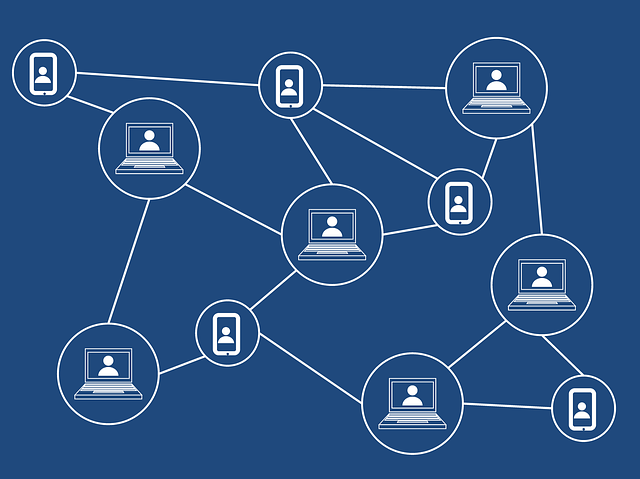Blockchain! What is it? How do they work? What problems do they solve? This article will take you through a few basic things that most of us don’t know about this technology that is rapidly changing how data is stored and distributed worldwide.
What is Blockchain?

Image source: Pixabay
A blockchain is literally a chain of blocks that contain information. This information storage technique was first described in 1991 by a group of researchers. It was initially intended to timestamp digital documents so that it is not possible to backdate them or temper them.
However, it was mostly unused until Satoshi Nakamoto adapted it in 2009 to create the digital cryptocurrency Bitcoin.
A blockchain is a distributed ledger that is entirely open to anyone. Thus also known as digital ledger technology. Each block contains three major components:
- The data
- The hash of the block, and
- The hash of the previous block.
DATA
The data stored inside a block depends on the type of blockchain. Let’s take the example of the BITCOIN BLOCKCHAIN to understand this. The ‘Bitcoin blockchain’ stores the data related to the details of a transaction here, such as the sender, receiver, and amount of coins.
HASH
A ‘hash’ is basically like a fingerprint of the block. It identifies a block and its contents, and it’s always unique, just as a fingerprint.
Once a block is created, its hash is then calculated. Any change in the block will cause the hash to change. If the fingerprint of a block changes, it no longer is the same block.
THE HASH OF THE PREVIOUS BLOCK
The third component inside one block is the hash of the previous block. This effectively creates a chain of blocks, and it’s this technique that makes a blockchain so secure. The first block ever created is called the genesis block for that particular chain. Thus, it will not have any information regarding the previous one as none exists.
Security Features in Blockchain Technology

Image source: Asian Development blog
One of blockchain’s most significant advantages and goals is its superior security features. These include:
- Changing a single block will make all following blocks invalid.
- Computers can calculate hundreds of thousands of hashes per second. So to avoid this, blockchains have something called proof-of-work. It’s a mechanism to slow down the creation of new blocks.
- Instead of using a central entity to manage the chain, blockchains use a peer-to-peer network, allowing anyone to join. When someone joins this network, they get the full copy of the blockchain. When someone creates a new block, that new block is sent to everyone on the network. Each node then verifies the block to ensure that it hasn’t been tampered with. Blocks that are tampered with will be rejected by other nodes in the network, ensuring no data is leaked.
- One of the more recent developments is the creation of smart contracts. These contracts are simple programs that are stored on the blockchain and can be used to execute a specific command automatically.
Healthcare Challenges That Can Be Tackled Using blockchain Technology
Tackling existing and newer healthcare challenges can increase operational efficiencies and workflow processes, reducing the burden on hospitals, clinics, doctors, administration and patients and the overall cost incurred by a clinical facility and the patients. Some healthcare challenges that can be tackled by blockchain technology are:
- Interoperability: The way different healthcare providers are able to share, search and query patient records is essential for providers and policymakers. Thus, the exchange of data becomes secure and easy.
- Record duplication: Patient records are not accurately matched even within the same healthcare system. They are also mismatched when data is transferred between healthcare systems. Blockchain technology can simplify this process and create uniformity across a particular state or country.
- Information blocking: It is a very unreasonable constraint in the exchange of patients’ details. Blocking takes place due to policies that prevent sharing of patient information. The primary reason is that hospitals don’t want to lose out on patients.
Blockchain Applications In Healthcare

Image source: Data Art
Blockchains in healthcare can be utilized in five major areas:-
- Managing electronic medical record (EMR) data
- Protection of healthcare data
- Personal health record data management
- Point-of-care genomics management
- Electronic health records (EHR) data management
With the help of an example, let’s understand how blockchain is being used in healthcare.
Say there is a private blockchain network. This can connect insurance providers, hospitals, IT companies, and anyone who needs patient information at any given time. Patients will have a unique hash ID and complete control over their data and records.
To get one’s information, the institution will send a request, and the patient can confirm or deny it. The power to share patient data will remain solely with the patient and not the hospital or the intermediaries. This ensures data safety. Each patient’s unique hash ID will be generated by putting their information into an algorithm. The resulting output will be assigned to the patient and saved in the blockchain.
Using blockchain will make the system robust as the patient will have complete control over decisions to seek the best healthcare. The healthcare industry will gain the information needed for patient care and free them from profit-seeking information constraints.
Maintaining Health Records
Electronic medical records are the backbone of the modern healthcare system. Medical records grow longer and become more complex with each doctor visit. Since every institution has a different way of storing them, it’s not always easy for healthcare providers to access them.
Various companies are working on integrating data and making it accessible. The goal is to give patients authority over their entire medical history and to provide one-stop access to both the patient and the physician. Blockchain can make maintaining health records easy and streamlined.
Supply Chains
Supply chain management in the pharmaceutical industry can be monitored securely and transparently with blockchain. This will also reduce time delays and human mistakes. Costs, labour, and waste in emissions can also be observed at every point in the supply chain. It can be used to verify the authenticity of products by tracking them from their origin, combating the counterfeit drug market.
Genomic Data Storage
Companies like EncrypGen and Nebula Genomics are building blockchain platforms to enhance genomic data protection, enable buyers to acquire genomic data efficiently, and deal with the challenge of massive datasets generated in genomic studies.
Research
Researchers looking to study trends, effects of treatments, at-risk demographics, etc., can put a mass offer to the system and request the release of anonymous health data. The request will come to the patient directly. The patient can then choose whether or not to participate in the research.
Concerns and Challenges of Using Blockchain in Healthcare
No technology is perfect. Similar are the concerns with this emerging technology. Following are a few challenges that need to be dealt with during the application of this tech at a large scale.
- Maintaining Network infrastructure security at all levels
- Identity verification and authentication of all participants/Patients.
- Creating a universal pattern of authorization to access electronic health information.
All of these applications are still in their early stages of development. With more and more institutions exploring how to ensure the security of remote monitoring devices, we can soon see blockchain technology being used as a part of a comprehensive data security strategy.
REFERENCES:
-
https://www.youtube.com/watch?v=Oga9J0NFwAA
-
https://www.news-medical.net/health/Blockchain-Applications-in-Healthcare.aspx
-
https://www.forbes.com/sites/forbestechcouncil/2021/10/25/the-future-of-blockchain-in-healthcare/?sh=1f6b83b8541f
-
https://www.ncbi.nlm.nih.gov/pmc/articles/PMC6517629/
-
https://www.news-medical.net/health/Blockchain-Applications-in-Healthcare.aspx
-
https://biomedres.us/fulltexts/BJSTR.MS.ID.003448.php
-
https://dx.doi.org/10.1007/978-3-030-51517-1_23.
-
https://www.ncbi.nlm.nih.gov/pmc/articles/PMC7313278/
-
https://rubygarage.org/blog/how-blockchain-works









